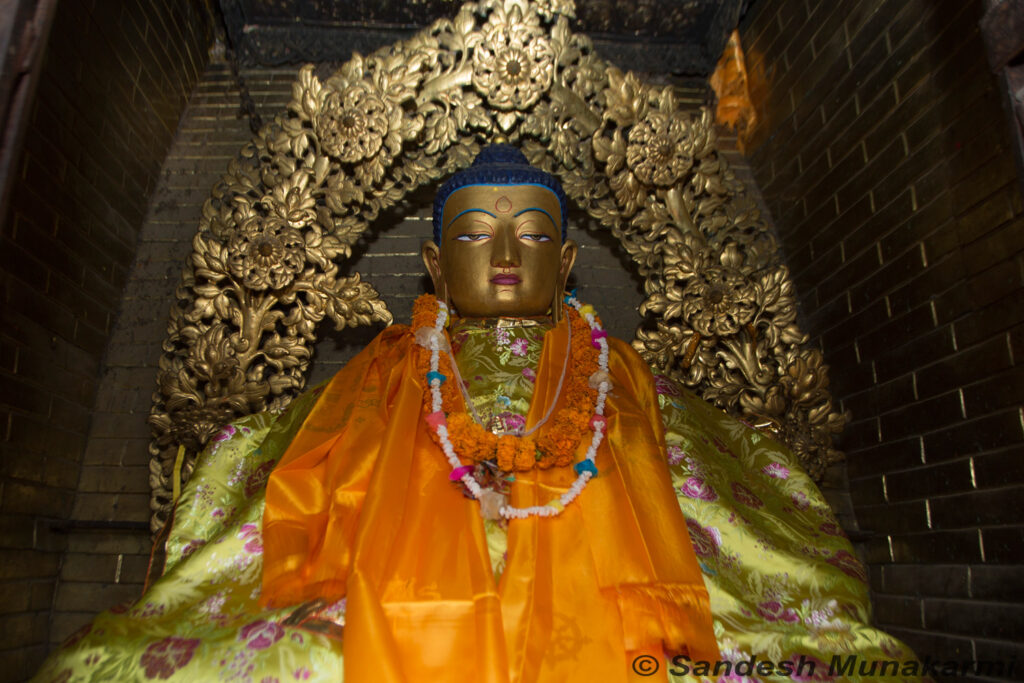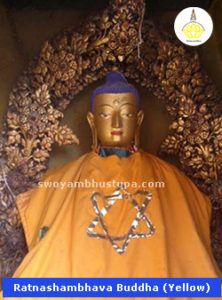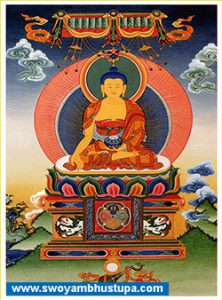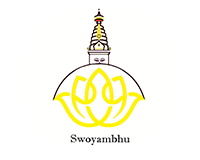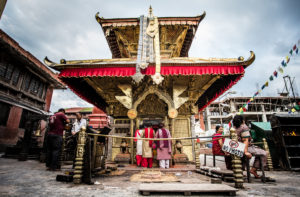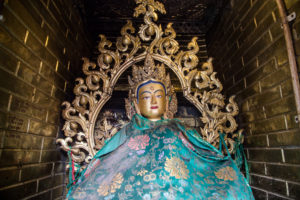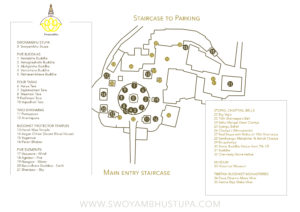Pancha Buddha

Vajrayana introduced the theory of the five Dhyani Buddhas as embodiments of the five cosmic elements– ether, water, earth, fire and air and formulated the theory of the family of the five Dhyani Buddhas from which deities emanate according to need. The cult of the Dhyani Buddhas, who are assigned definite positions in the cosmogony of the stupa is quite popular in Nepal and may have been introduced from India as early as the 7th century A.D. The immense popularity of this cult can easily be seen and the hundreds of votive chaityas in and around the Valley. Of the five Dhyani Buddhas the senior, in Nepali hierarchy, is Vairochana (ether) who occupies the center of a Mandala but is not represented in the roadside votives which depict only the other four Dhyani Buddhas, Akshobhya (water) of the East, Ratna-Sambhava (earth) of the South, Amitabha (fire) of the West and Amoghsiddhi of the North. In the Swayambhu stupa, Vairochana is placed between Akshobhya and Ratna-Sambhava.
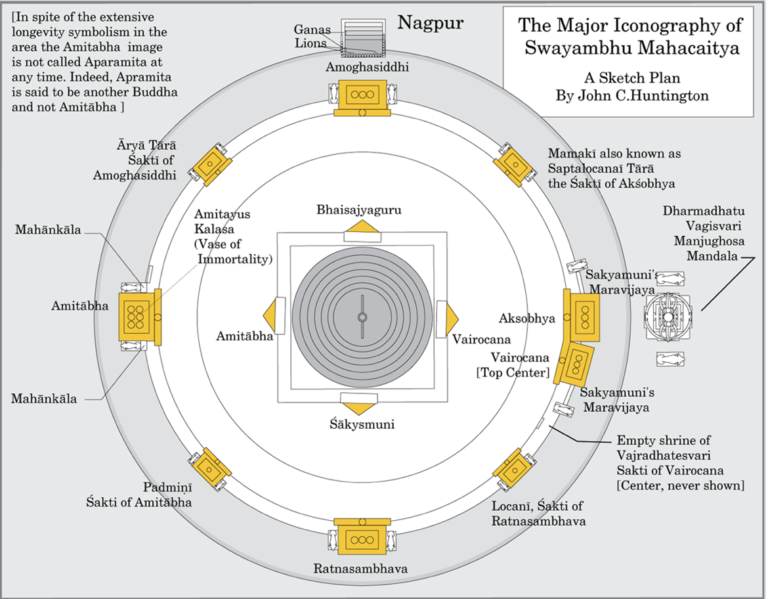
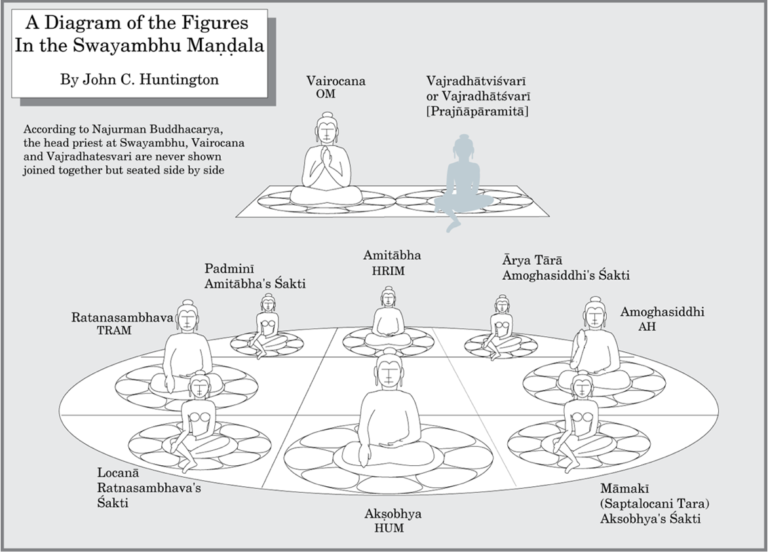
Definition of Five buddhas around the Swoyambhu Stupa premises.
1. Amitabha Buddha
Amitabha Buddha is red in colour. Amitabha Buddha is represented in the stupa facing to the west. Amitabha Buddha rides on peacock symbolizing that he can take away the suffering of others just as the peacock eats poisonous plants and yet his tail shines forth. Amitabha Buddha resides in the western land of unlimited bliss (Sukhavati). Amitabha Buddha is assisted by two bodhisattvas viz. Avalokiteshvara and Mahasthamprapta.
Amitabha Buddha always exhibits Dhyana Mudra. Amitabha Buddha belongs to the Lotus family. Amitabha Buddha originates from the seed syllable hrīḥ. The female consort of Amitabha Buddha is Pandura, who is gifted with the sense of taste through Tongue. She is the fourth of the Tara family.
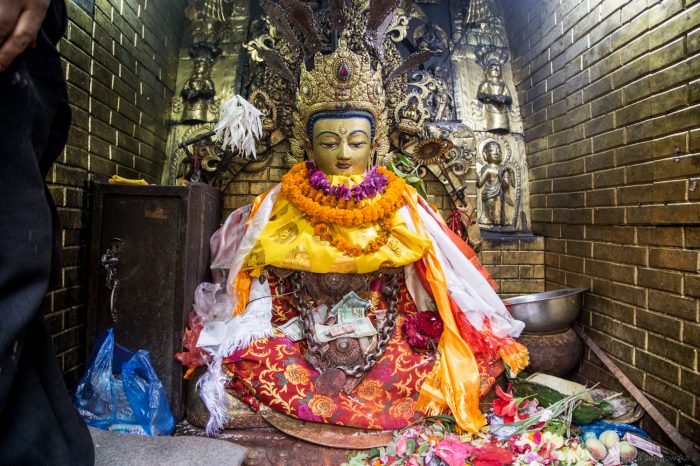
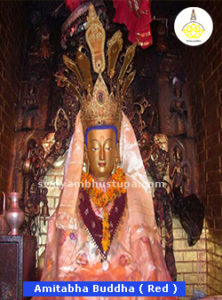
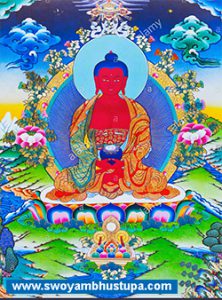
2. Amoghsiddhi Buddha
Amoghsiddhi Buddha (the purified from of jealousy) is one of the Pancha Dhyani Buddhas. Amogh Siddhi Buddha represents the ‘all accomplishing wisdom’ (Krityanusthan gyana). Amoghsiddhi Buddha represents the purified form of jealousy.
Amoghsiddhi Buddha is green in colour. Amoghsiddhi Buddha is represented in the stupa facing to the north. Amoghsiddhi Buddha rides on Garuda symbolizing that he can detect the presence of serpent-like delusion from a distance. A serpent with seven hoods and an umbrella is depicted on the background. He exhibits Abhaya Mudra symbolizing fearlessness. Amoghsiddhi Buddha alone has a canopy of snakes over his head. He is said to be the embodiment of volition (Sanskara) and Air element (Vayu). The female consort of Amoghasiddhi Buddha is Arya Tara who is capable of liberating all the sentient beings from this ocean of the material world.
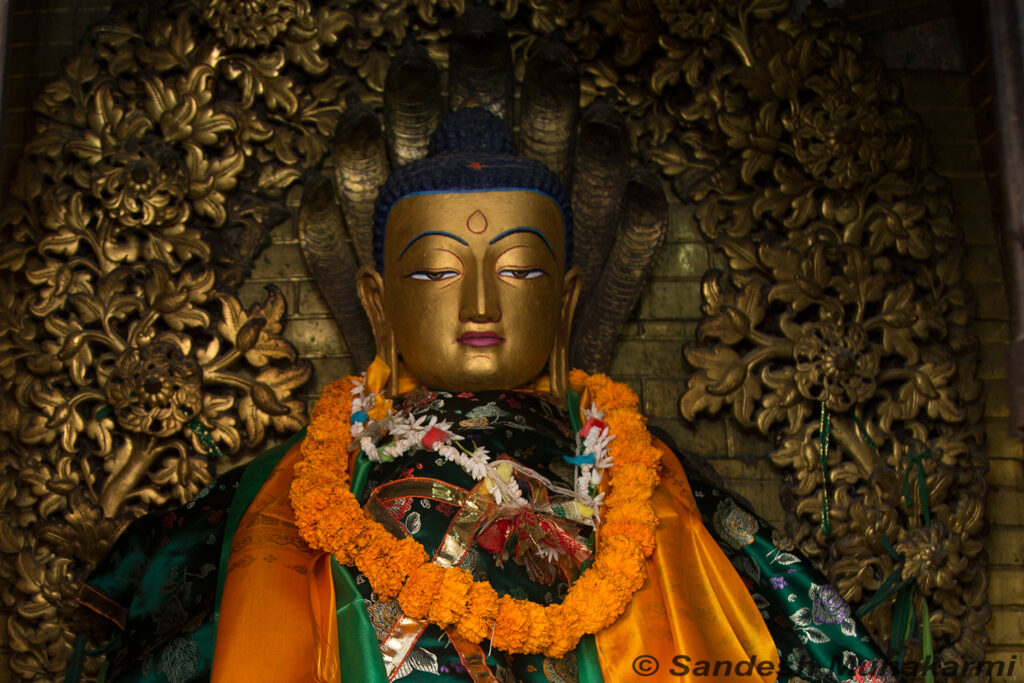
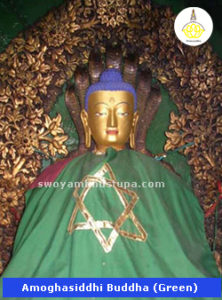
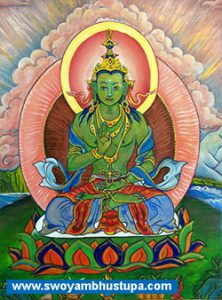
3. Akshyobha Buddha
Akshyobha Buddha is one of the Pancha Buddhas symbolizing Mirror-like Wisdom (Akasha gyana), which means the wisdom like space, all-pervasive, without periphery and without characteristics. Akshyovya Buddha is the essence of purified form of Hatred. The image of Akshyovya Buddha is placed in the East of the stupa.
Akshyovya Buddha is blue in colour. Akshyovya Buddha exhibits Earth-touching gesture known as Bhu Sparsa Mudra. Akshyovya Buddha rides on the throne of an elephant symbolizing steadfast nature of his Bodhisattva vows.
The female consort of Akshyovya Buddha is Lochani who is believed to illuminate all three Lokas:
Svarga, Martya and Patala.
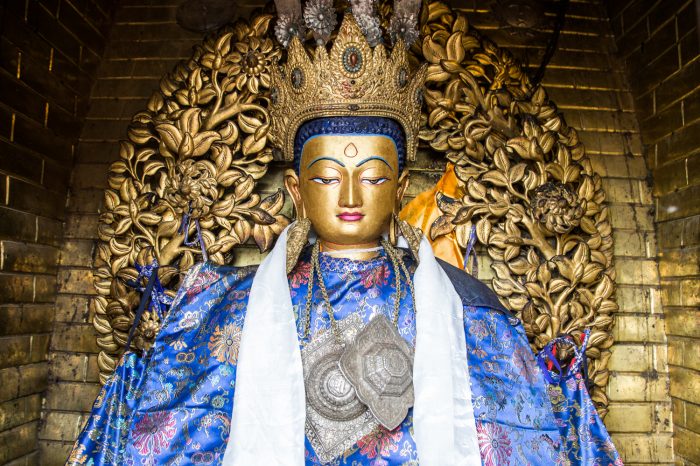
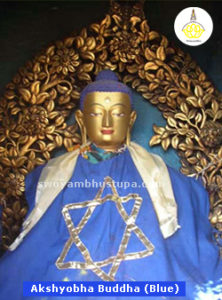
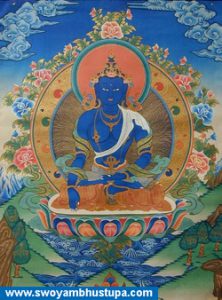
4. Vairochana Buddha
Vairochana Buddha is one of the Five Tathagatas symbolizing all pervasive wisdom (Suvisuddha dharma dhatu gyana) i.e. knowledge free from all kinds of obscuration. Vairocana Buddha is placed generally in the sanctum of the stupa. But Vairochana Buddha in Swoyambhu is placed between Akshobhya and Ratna Sambhava. Vairocana Buddha resides always in the Akanistha heaven that is the center of the stupa.
Vairochana Buddha is white in colour and his hands are held against his chest with the tips of thumb and forefinger of each hand joined displaying Bodhyanga mudra known as Dharmachakraparvartana Mudra. The vehicle (Aashana) of Vairochana Buddha is a lions symbolizing lions roar of Dharmadhatu gyana terrifying all wrong views. The female consort of Vairochana Buddha is Vajradhatvishwori. She is represented in the center of the Vajra Mandala as the eliminating and as powerful as Thunderbolt.
Vairochana Buddha originates from the seed syllable “Om” placed on the orb of the moon. He also represents Rupa (form) of the five aggregates.
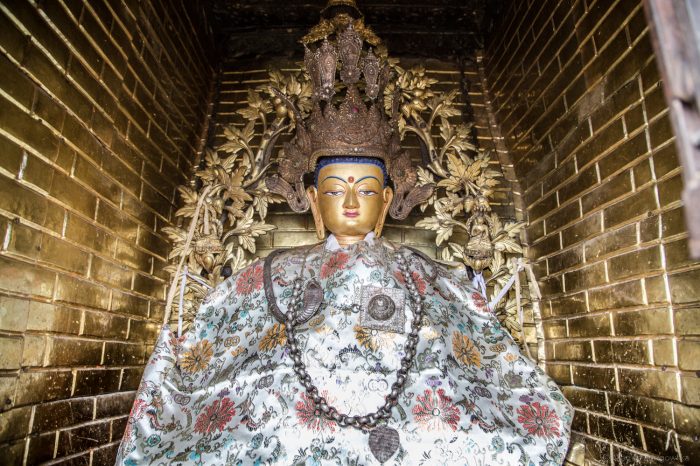
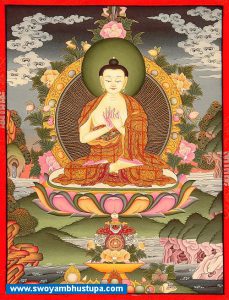
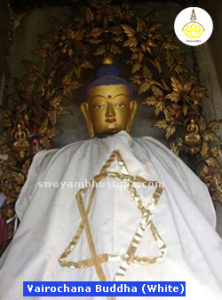
5. Ratnasambhava Buddha
Ratna Sambhava Buddha (Buddha born from Jewel) is one of the Pancha Dhyani Buddhas symbolizing wisdom of equality (Samata gyana).Ratna Sambhava Buddha is yellow in colour. Ratna Sambhava Buddha belongs to the Buddha family of Jewel or boon, therefore, his posture is like boon giving known as Varada Mudra with his right hand. Ratna Sambhava Buddha holds Cintamani jewel in his left hand kept on his lap. Ratna Sambhava Buddha is placed in the stupa facing to the South. Ratna Sambhava Buddha also represents the purified form of defilement pride. Ratna Sambhava Buddha rides on the horse throne symbolizing that he ferries over the suffering sentient beings with full vigour. He resides in the pure abode of Ratnavati heaven. The female consort of Ratna Sambhava is Mamaki who is gifted with the sense of smelling of Nose and is all illuminating and loved by all.
